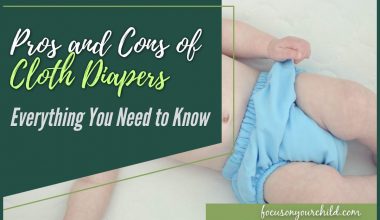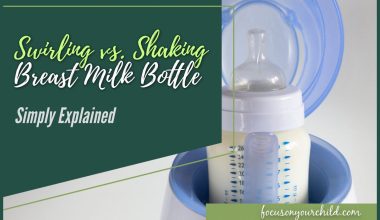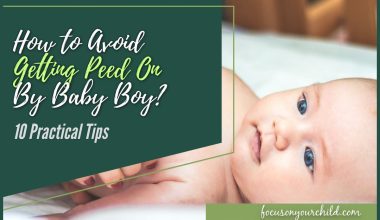If you’ve ever attempted to remove a small, sockless foot from the supermarket floor while maintaining your dignity, chances are you’ve brushed shoulders with gentle parenting.
This approach is big on respect, boundaries, and kindness—and, crucially, still lets you drink your coffee while it’s hot (some days, anyway).
But can you nurture a tiny human’s emotional growth without morphing into a doormat? Absolutely.
Here’s how the magic happens, even when you’re running on fumes.
What Gentle Parenting Actually Means
Gentle parenting is not about always saying yes. Nor does it mean you’ll be negotiating with pint-sized tyrants about how many biscuits are acceptable before breakfast.
At its core, it’s about connection and guidance, with a side of firm boundaries. Dr. Laura Markham, a clinical psychologist, describes gentle parenting as “guiding children with empathy while still providing loving limits.”
It’s not a free-for-all, and it definitely doesn’t require you to sign away your authority in exchange for a tantrum-free afternoon.
Boundaries Aren’t Mean—They’re Loving
Toddlers crave structure. It might not seem like it when they’re launching spaghetti at the wall, but those boundaries provide a sense of safety.
Gentle parenting means holding these boundaries with kindness.
When your toddler wants to wear swim trunks to nursery in December or insists the dog wants to eat crayons for dinner, you can calmly hold the line, “We wear warm clothes to keep our bodies safe,” or “Crayons are for drawing, not for eating.”
The trick is staying calm and compassionate, even as your child is auditioning for a spot on MasterChef: Tantrum Edition.
Be the Calm in Their Storm
Toddlers are essentially walking, sticky feelings with legs. Their emotional regulation skills are about as developed as their taste in television (Peppa Pig, again?!).
The best thing you can do is model the calm you want to see.
Research from the Center on the Developing Child at Harvard University highlights how children learn emotional regulation by watching the adults around them.
If you take a steady breath before responding to a meltdown, you’re teaching your child that big feelings are manageable—even if your inner monologue is sounding the air raid siren.
Connection Before Correction
Nothing melts toddler resistance faster than a dose of connection. When you’re about to set a limit (“No, you can’t draw on the sofa with felt tips”), connect first: “You love making art! I see those creative hands working.”
This signals to your child that you’re on their team, even when you’re guiding them away from disaster (or upholstery cleaning bills).
Clinical psychologist Dr. Becky Kennedy calls this approach “seeing the good kid beneath the behaviour” in her expert interviews.
When little ones feel understood, they’re far more likely to cooperate—even if there’s a brief pitstop in meltdown city.
Consistency Is Your Secret Weapon
Imagine if your boss kept changing your start time or suddenly swapped all the biscuits for celery without warning. You’d be confused, maybe even furious.
Kids are the same. Consistency helps toddlers predict what’s coming, which reduces anxiety and power struggles.
Decide on your family boundaries (for example, “We hold hands in the car park” or “We brush teeth every night”) and stick to them. Even on Tuesdays.
Even when you’ve run out of coffee. Kids don’t need perfection, just predictability.
Empathy Doesn’t Equal Agreement
A huge gentle parenting myth? That you have to agree with your child’s every request.
No one expects you to enjoy the 47th reading of The Very Hungry Caterpillar or to smile sweetly when they want ice cream for breakfast.
Instead, show empathy: “You’re really sad because you want another biscuit. I know, it’s tough when we can’t have what we want.” You’re acknowledging their feelings without caving in.
The magic here is that being heard is often enough to help them move on (eventually).
Offer Choices, Not Ultimatums
Toddlers are mini-control enthusiasts. Handing over tiny bits of appropriate power soothes their need for autonomy. Offer choices wherever you can: “Would you like the blue cup or the red one?” “Are we putting on shoes or coat first?”
You’re not opening up a democracy on bedtime, just giving them a slice of the decision-making pie.
A study published in the Journal of Child Psychology and Psychiatry shows that giving children age-appropriate choices can increase cooperation and reduce conflicts.
Who knew offering a choice between carrot sticks and cucumber could feel so revolutionary?
Pick Your Battles (and Your Hill to Die On)
If you’re saying no to everything, life quickly turns into a running argument. Save your energy for the big stuff: safety, kindness, and sleep.
Does it really matter if your toddler insists on wearing odd socks? Probably not. Is jumping off the sofa in the direction of a glass coffee table negotiable? Hard no.
This tactic keeps you from sounding like a broken record and helps your child learn which boundaries matter most.
How to Say No Without Unleashing the Kraken
Gentle parenting doesn’t mean avoiding the ‘N’ word entirely. It’s all about how you say it. Keep your tone neutral and your body language open.
Short, clear phrases work best: “Not for playing. That’s Mummy’s laptop.” Pair your ‘no’ with an alternative: “Balls are for throwing. Books are for reading.”
When you offer a brief explanation, you’re not getting sucked into a debate, but you are showing respect for their curiosity. That’s how you teach rules without turning into a drill sergeant.
Rituals and Routines Save Sanity
Ever noticed how toddlers thrive on repetition? That’s because routines help the world feel safe and predictable.
Bath, stories, snuggle, sleep—these predictable patterns are toddler catnip.
If you face a repeat struggle (say, getting out the door in the morning), try singing the same silly song or using a countdown. “Five more minutes till we put on our shoes!”
Suddenly, you’re not barking orders; you’re the MC of a very exclusive, slightly chaotic club.
Repair, Not Perfection
Even the gentlest parent will lose the plot sometimes. Maybe you yell. Maybe you threaten to move to a desert island where no one ever says “I do it myself!” The key is what you do next.
Go back, offer a hug, admit you were frustrated. “I shouted. That wasn’t kind. Next time I’ll try to use a calm voice.”
According to research published in Child Development, repairing after a rupture actually strengthens the parent-child bond. Authenticity over perfection, every time.
Gentle Parenting in Public—Yes, You Can
Nothing raises the blood pressure like a public tantrum. In these moments, it’s tempting to hand over the biscuit or make wild promises about Santa.
Instead, get low, make eye contact, and quietly offer comfort. Ignore the stares (everyone’s either been there or will be).
If your little one is simply past it, carry them out if you need to, and deal with feelings in private. Your job is your child, not the crowd.
Self-Care Isn’t Optional
Gentle parenting takes energy, patience, and at least one snack for yourself. Some days, the best you can manage is “I see you’re upset; I’m here when you’re ready.” That’s enough.
Recharge when you can—shove a biscuit in your mouth behind the fridge door, send a desperate text to your mate, lock yourself in the loo for a minute.
You’re no good to anyone if your cup’s emptier than the snack drawer.
When to Hold, When to Fold
Once you’ve set a boundary, hold it with compassion.
If your child is upset, offer comfort, not negotiation. “I know you’re sad we have to leave the playground. I’ll carry you to the car and we can listen to your favourite song.”
But if you realise you’ve been a bit strict for no reason (“No, you can’t wear your superhero cape to Nana’s”), it’s okay to re-evaluate. Flexibility isn’t weakness; it’s wisdom.
As Dr. Tina Payne Bryson reminds us in her book “The Whole-Brain Child”, being responsive, rather than reactive, helps kids thrive.
You’re Doing Better Than You Think
If you’re reading this between shoving a banana in your own mouth and rescuing a toddler from the Tupperware cupboard, you’re already winning at gentle parenting (and multitasking).
This style isn’t about perfection or martyrdom. It’s about human connection, honest repair, and holding boundaries with as much warmth as you can muster on three hours’ sleep.
On the days it all goes pear-shaped, know that your love—and your limits—matter most.
Raising Resilient Kids, One Kind Boundary at a Time
Gentle parenting with a toddler isn’t for the faint-hearted, but it’s deeply rewarding. You get to model kindness, teach empathy, and shape self-control—all while keeping your authority (and your furniture) intact.
Yes, you’ll still get tantrums. You might even get them in public.
But with a little consistency, a lot of empathy, and a sprinkling of humour, your child will learn that limits are loving—and you’ll both come out stronger.
Now, if anyone deserves a biscuit, it’s you.





